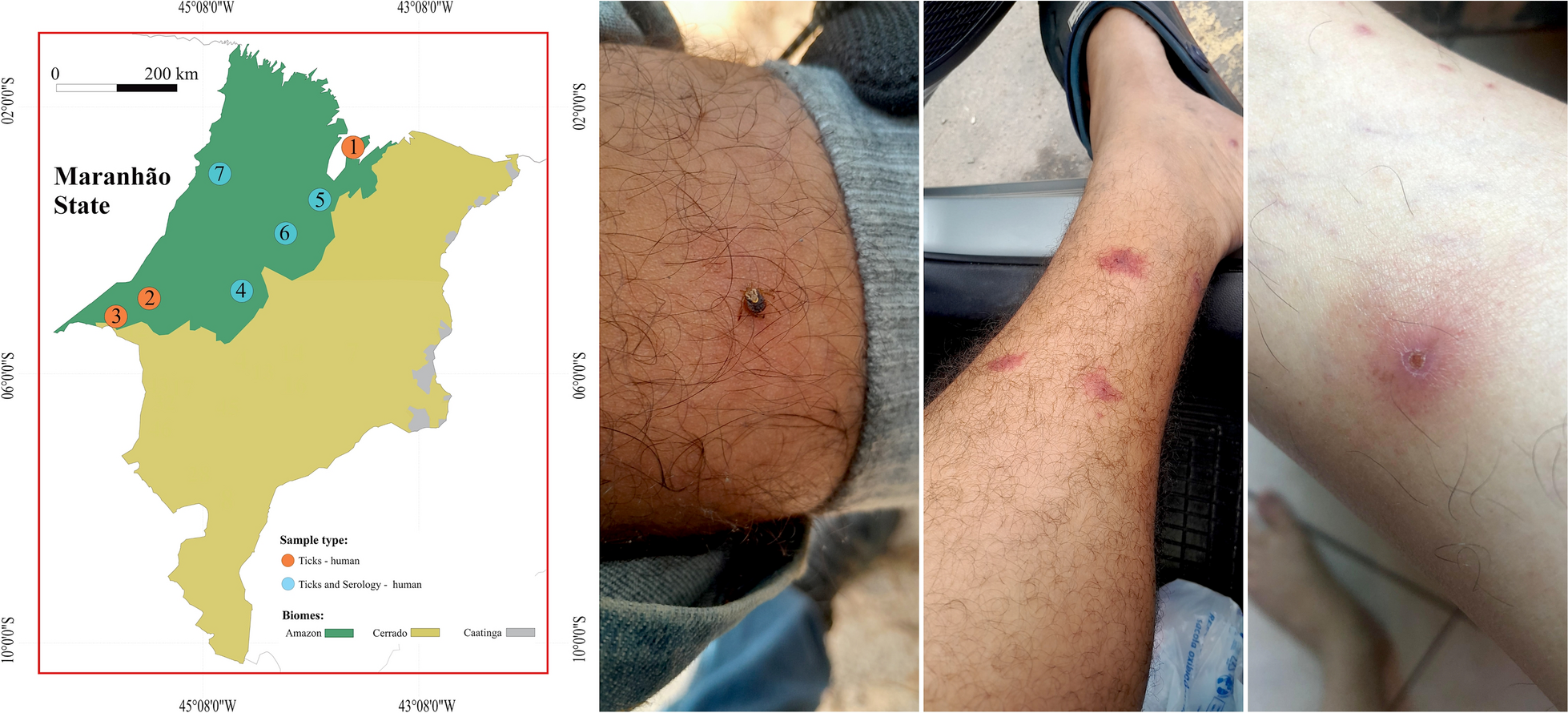Introduction
The most prevalent malignancy among women is breast cancer (BC).1 Metabolic reprogramming and immune evasion are two main features of the malignant transformation of BC, which facilitate cancer cell proliferation.2 The accumulation of reactive oxygen species (ROS) and oxidative stress are associated with many risk factors, including age, genetic susceptibility, exposure to ionizing radiation, and estrogen metabolism.3
Aldolase A (ALDOA) is a crucial enzyme within the glycolytic pathway. The process enables the reversible conversion of fructose-1,6-bisphosphate into glyceraldehyde 3-phosphate and dihydroxyacetone phosphate. Vertebrates possess three aldolase isozymes, ALDOA, ALDOB, and ALDOC, characterized by distinct electrophoretic and catalytic properties. ALDOA represents the primary aldolase isozyme in tumor tissues, and the systemic increase in aldolase activity due to ALDOA upregulation in these tissues is a distinctive characteristic of cancer.4,5 ALDOA has been observed to be overexpressed in a variety of malignant tumors, including gastric cancer,6 hepatocellular carcinoma,7 colorectal cancer,8 cervical cancer,9 kidney cancer10 and triple-negative BC.11,12 Numerous studies indicate that ALDOA may be an independent prognostic factor.13–15 Chang et al reported ALDOA was overexpressed in breast cancer tissues and a correlation between ALDOA expression levels and overall survival.16 However, the potential correlation between ALDOA expression and clinicopathological features remains elusive and needs further evaluation.
To ascertain the clinical implications of ALDOA in BC, this study examined any potential correlation between its expression and clinicopathological traits. Furthermore, we assessed the predictive significance of ALDOA in BC using the Kaplan-Meier plotter.
Methods
ALDOA Expression Analysis
The mRNA expression of ALDOA in pan-cancer data was analyzed by using the Tumor Immune Estimate Resource (TIMER) database (https://cistrome.shinyapps.io/timer/). The data of ALDOA expression in BC tissue and in normal tissue was analyzed using the Gene Expressing Profiling Interactive Analysis (GEPIA; http://gepia.cancer-pku.cn/) platform, the UALCAN web portal (http://ualcan.path.uab.edu/), and the BC Gene-expression miner (bc-GenExminer) v5.1 (http://bcgenex.ico.unicancer.fr).
Correlation Analysis of ALDOA and Clinicopathological Features
The Gene Expressing Profiling Interactive Analysis (GEPIA; http://gepia.cancer-pku.cn/) platform, the UALCAN web portal (http://ualcan.path.uab.edu/), and the BC Gene-expression miner (bc-GenExminer) v5.1 (http://bcgenex.ico.unicancer.fr) were used to analyze the correlation of ALDOA and clinicopathological features of BC patients. We used these databases based on the Pearson χ2 test to analyze ALDOA mRNA expression among tumor and normal samples and P values < 0.05 to evaluate the statistical significance. The user-friendly web portal bc-GenExminer v5.1 includes BC patients’ clinicopathological data based on microarray and RNA-seq (Jézéquel et al, 2012). The expression of GSTMs according to Scarff-Bloom-Richardson (SBR) grade and intrinsic molecular subtypes was identified by the Prediction Analysis of Microarray 50 (PAM50) test. The significant P value (P < 0.05) was determined using Dunnett-Tukey-Kramer test and Welch’s t-test.
Survival Analysis
The association between ALDOA mRNA expression and BC patient survival, including overall survival (OS), recurrence-free survival (RFS) and distance metastasis-free survival (DMFS), was evaluated while using the Kaplan-Meier (K-M) Plotter (https://kmplot.com) database. P < 0.05 were considered as significant.
Human BC Tissues
The Department of General Surgery at Soochow University’s First Affiliated Hospital collected 96 BC and 50 adjacent healthy samples from BC patients with histological diagnoses who had radical surgery. None of the participants had chemotherapy or radiotherapy before surgery. The ethics board of the relevant institution approved this study (IRB number is 2022-083), which was conducted in compliance with the Declaration of Helsinki. Written informed consent was obtained from all patients prior to study commencement.
Immunohistochemistry (IHC)
Following defined procedures, the paraffin-embedded tissues were sectioned to a thickness of 5 μm, incubated at 4°C overnight with a monoclonal human ALDOA antibody (dilution 1:100; #11305-1-AP, Proteintech), stained using a staining kit (Zhongshan Biotechnology, Bei-jing, China), followed by visualization. After this, the staining score was evaluated based on positive cell rate and color intensity.17,18 The staining was divided by color intensity into not colored, light yellow, brown, and tan and is recorded as 0, 1, 2, and 3, respectively. Positive cell rate of <25% was a score of 1, positive cell rate of 25–50% was a score of 2, positive cell rate of 51–75% was a score of 3, positive cell rate of >75% was a score of 4. The final score was calculated by the multiple of the intensity and extent score. A final score of 0 was considered as −; 1–4 as +; 5–8 as ++; 9–12 as +++. In our study, ++ or +++ was considered as high expression, and – or + as no or low expression.
Statistical Analysis
The statistical significance was assessed by one-way analysis of variance or Student’s t-test (paired, unpaired, or two-tailed). The difference in mRNA expression between groups was made by Welch’s and Dunnett-Turkey-Kramer’s tests. The associations between ALDOA expression and clinicopathologic variables were examined using the Pearson χ2 test. K-M analysis was used for survival analysis. It was determined that P < 0.05 was statistically significant.
Results
ALDOA Expression Levels are Higher in BC Tumor Tissues Compared to Normal Tissues
The RNA-seq data analysis from the TIMER database shows that most cancer tissues had ALDOA expression higher than in normal tissues, including 13 malignancies like BC (Figure 1A). According to the UALCAN database and the bc-GenExMiner v5.1 cohort, BC tissues had a considerably higher amount of ALDOA than normal tissues (Figure 1B and C, P < 0.001). ALDOA expression was higher in BC tumors than in normal breast tissues in the GEPIA dataset (Figure 1D; insignificant but marginal).
|
Figure 1 ALDOA expression in human BC tissues. (A) ALDOA expression in tumor and normal tissues in TIMER database. (B–D) ALDOA expression in BC tumor and normal tissues in bc‐GenExMiner v5.1 (B), UALCAN (C) and GEPIA (D) databases. (E) Representative IHC staining of ALDOA in human BC tissues and normal tissues. (F) Analysis of ALDOA IHC scores in human BC tissues and normal tissues. ***P < 0.001.
|
Furthermore, IHC was used to assess the expression of the ALDOA protein in BC tissues and normal breast tissues. In BC tissue, ALDOA protein-positive staining increased (Figure 1E). Importantly, human BC tissues had higher IHC scores than normal tissues (Figure 1F; P < 0.001).
Relationship Between ALDOA Expression and BC Patients’ Clinicopathological Features
This study used the bc-GenExMiner v5.1 (Table 1) and UALCAN (Table 2) databases to examine the relationship between ALDOA expression and clinicopathological variables. Higher expression of ALDOA was linked to micropapillary BC, lymph node metastasis (LNM), older age, and high Ki67 expression. However, the correlations between ALDOA expressions with the staging of LNM patient’s gender and TNM stage were not significant (Figure 2).
 |
Table 1 The Correlation Between ALDOA Expression and Clinicopathological Features of BC Patients Using the bc‐GenExMiner v5.1 Database
|
 |
Table 2 The Correlation Between ALDOA Expression and Clinicopathological Features of BC Patients Using the UALCAN Database
|
 |
Figure 2 ALDOA expression in different subgroups of human BC tumor tissues in bc‐GenExMiner v5.1 and UALCAN databases. (A) ALDOA expression in BC tumors of different histological types in bc‐GenExMiner v5.1 database. (B and C) ALDOA expression in BC tumors with or without LNM in bc‐GenExMiner v5.1 (B) and UALCAN (C) databases. (D and E) ALDOA expression in BC tumors based on patient’s age in bc‐GenExMiner v5.1 (D) and UALCAN (E) databases. (F) ALDOA expression in BC tumors based on patient’s gender in UALCAN database. (G) ALDOA expression in BC tumors based on ki-67 status in bc‐GenExMiner v5.1 database. (H and I) ALDOA expression in BC tumors based on tumor stages in bc‐GenExMiner v5.1 (H) and UALCAN (I) databases. ***P < 0.001. Abbreviation: ns, nonsignificant.
|
Afterward, this study examined the correlation between ALDOA expression and the pathological factors of BC. In the bc‐GenExMiner v5.1 database, elevated expression of ALDOA was associated with ER+ (Figure 3A), PR+ (Figure 3B), and ER+/PR+ (Figure 3C). However, the correlations between ALDOA expression and HER2 status were insignificant (Figure 3D). ALDOA expression in BC tumors based on PAM50 molecular subtypes was also investigated, and results showed that non-basal-like (including HER2-enriched (HER2-E), Luminal A and Luminal B subgroups) BC possessed higher ALDOA expression than the basal-like subtype (Figure 3E and F). The ALDOA expression of non-triple negative breast cancer (TNBC) tissue was higher than that of TNBC (including LAR, MLIA, BLIA, and BLIS subgroups) tissue (P = 0.0043, Figure 3G and H). Among different subtypes of TNBC, the luminal androgen receptor (LAR) subgroup showed higher ALDOA expression than other subtypes (P < 0.0001, Figure 3H and I).
 |
Figure 3 ALDOA expression in different subgroups of human BC tumor tissues in bc‐GenExMiner v5.1 database. (A–D) ALDOA expression in BC tumors based on ER (A), PR (B), ER/PR (C) and HER2 (D) status. (E) ALDOA expression in BC tumors based on PAM50 molecular subtypes. (F and G) ALDOA expression in BC tumors based on basal-like (PAM50 (F)) and TNBC (G) and status. (H and I) ALDOA expression in BC tumors based on non-TNBC and TNBC subtypes.
|
In the bc‐GenExMiner v5.1 database, the correlations between ALDOA expression in BC tumors with breast cancer susceptibility gene (BRCA) 1 (Figure 4A, P = 0.9913), BRCA2 (Figure 4B, P = 0.3623) or BRCA1/2 status (Figure 4C, P = 0.3494) were not significant. The GES analysis from bc-GenExMiner database revealed that the ALDOA expression level of p53 wild-type BC was higher than p53 mutated (Figure 4D, P = 0.0002). However, in the IHC analysis from bc-GenExMiner database and the UALCAN database, the status of P53 was not related to the ALDOA expression in BC (Figure 4E and F). Moreover, higher ALDOA levels were substantially correlated with higher Scarff-Bloom-Richardson (SBR) grade (Figure 4G, P = 0.002) and Nottingham Prognostic Index (NPI) (Figure 4H, P = 0.0004). Asian patients showed the highest ALDOA expression among all three races (Figure 4I, P < 0.001).
 |
Figure 4 ALDOA expression in different subgroups of human BC tumor tissues in bc‐GenExMiner v5.1 and UALCAN databases. (A–C) ALDOA expression in BC tumors based on BRCA1 (A), BRCA2 (B) AND BRCA1/2 status in bc‐GenExMiner v5.1 database. (D and E) ALDOA expression in BC tumors based on p53 (GES (D)), p53 (IHC (E)) status in bc‐GenExMiner v5.1 database. (F) ALDOA expression in BC tumors based on p53 status in UALCAN database. (G and H) ALDOA expression in BC tumors based on Scarff-Bloom-Richardson (SBR (G)) grade and NPI (Nottingham prognostic index (H)) status in bc‐GenExMiner v5.1 database. (I) ALDOA expression in BC tumors based on patient’s race in UALCAN database. ***P < 0.001. Abbreviation: ns, nonsignificant.
|
Moreover, the relationship between ALDOA expression and the clinical characteristics in 96 BC patients who underwent radical surgery was investigated using IHC (Table 3). Increased ALODA expression was shown to be significantly associated with higher histological grade (Table 3, P < 0.001) and lymph node metastasis (Table 3, P = 0.043). However, no significant correlation was found between ALDOA expression and TNM stage, vascular invasion, tumor location, tumor size, or age (Table 3, P > 0.05).
 |
Table 3 The Relationships Between ALDOA and Clinicopathological Factors in 96 Patients with Breast Cancer
|
The OS of BC Patients is Correlated with ALDOA Expression in Various Subgroups
The correlation between ALDOA mRNA expression in various subgroups and OS of BC patients was determined using the K-M survival curve analysis from the K-M Plotter database. In BC patients, shorter OS was predicted by higher ALDOA expression (Figure 5A, HR = 1.34, P = 0.0027). The results of the subgroup analysis showed that in the ER-positive (Figure 5B, HR = 1.42, P = 0.003), ER-negative (Figure 5C, HR = 1.6, P = 0.0067), PR-positive (Figure 5D, HR = 2.89, P = 0.006), and HER2-positive (Figure 5F, HR = 1.57, P = 0.014) subgroups, a shorter OS rate was associated with higher ALDOA expression. ALDOA expression did not, however, significantly correlate with the OS of BC patients who were PR negative (Figure 5E, HR = 1.56, P = 0.071) or HER2 negative (Figure 5G, HR = 1.23, P = 0.076). Higher ALDOA level was significantly associated with shorter overall survival in lymph node-negative patients (Figure 5I, HR = 1.58, P = 0.0086), this correlation was not significant in the lymph node-positive cohort (Figure 5H, HR = 1.23, P = 0.23).
 |
Figure 5 ALDOA expression in different subgroups correlates with overall survival (OS) of patients with BC from Kaplan-Meier plotter database. (A) Kaplan-Meier survival curve analysis shows OS of BC patients. (B and C) Kaplan-Meier survival curve analysis shows OS of BC patients based on ER status ((B) ER positive; (C) ER negative). (D and E) Kaplan-Meier survival curve analysis shows OS of BC patients based on PR status ((D) PR positive; (E) PR negative). (F and G) Kaplan-Meier survival curve analysis shows OS of BC patients based on HER2 status ((F) HER2 positive; (G) HER2 negative). (H and I) Kaplan-Meier survival curve analysis shows OS of BC patients with LNM (H) or without LNM (I). Abbreviation: HR, hazard ratio.
|
OS was significantly shortened in high ALDOA expressing basal (Figure 6A, HR = 1.94, P = 0.0011), luminal A (Figure 6B, HR = 1.42, P = 0.033), and luminal B (Figure 6C, HR = 1.56, P = 0.017) BC patients when taking StGallen molecular subtypes into account. However, there was no significant correlation between the OS of BC patients with HER2 and ALDOA expression (Figure 6D, HR = 1.64, P = 0.086). Patients with p53 wild-type tumors exhibiting high ALDOA expression demonstrated significantly shorter overall survival (Figure 6F, HR = 1.95, P = 0.032). This association was not significant in the p53-mutated subgroup (Figure 6E, HR = 2.2, P = 0.094). Furthermore, high ALDOA expression is related to shorter OS in histological grade 1 (Figure 6G, HR = 2.29, P = 0.053, not significant, but marginal) and grade 2 (Figure 6H, HR = 1.67, P = 0.011) subgroups. Still, there was no discernible correlation between the OS of the histological grade 3 subgroup and the expression of ALDOA mRNA (Figure 6I, HR = 1.23, P = 0.26).
 |
Figure 6 ALDOA expression in different subgroups correlates with OS of patients with BC from Kaplan-Meier plotter database. (A–D) Kaplan-Meier survival curve analysis shows OS of BC patients based on StGallen molecular subtypes ((A) basal; (B) luminal A; (C) luminal B; (D) HER2 positive). (E and F) Kaplan-Meier survival curve analysis shows OS of BC patients based on p53 status ((E) mutated; (F) wild type). (G–I) Kaplan-Meier survival curve analysis shows OS of BC patients based on histological grade ((G) grade 1; (H) grade 2; (I) grade 3).
|
The RFS of BC Patients is Correlated with ALDOA Expression in Various Subgroups
K-M survival curve analysis employing the K-M Plotter database showed that ALDOA mRNA expression was linked to relapse-free survival (RFS) of BC patients in several categories. BC patients with high ALDOA expression generally had significantly shorter RFS than those with low ALDOA expression (Figure 7A, HR = 1.15, P = 0.0085). Considering different pathological subgroups, shortened RFS was related to higher ALDOA expression regardless of the ER and PR status (Figure 7B–E), and also in HER2 positive BC patients (Figure 7F, HR = 1.42, P = 0.0017). However, among HER2-negative patients, there was no significant correlation between ALDOA expression and RFS (Figure 7G, HR = 1.09, P = 0.12). Elevated ALDOA expression corresponded to reduced RFS in LNM negative breast cancer cases (Figure 7I, HR = 1.22, P = 0.018). Conversely, nodal metastasis-positive patients exhibited no statistically association between ALDOA levels and RFS outcomes (Figure 7H, HR = 1.17, P = 0.13). Considering LNM status, shortened RFS was related to higher ALDOA expression in BC patients without LNM (Figure 7I, HR = 1.22, P = 0.018). In contrast, in patients with LNM, the correlation was not significant (Figure 7H, HR = 1.17, P = 0.13).
 |
Figure 7 ALDOA expression in different subgroups correlates with relapse‐free survival (RFS) of patients with BC from Kaplan-Meier plotter database. (A) Kaplan-Meier survival curve analysis shows RFS of BC patients. (B and C) Kaplan-Meier survival curve analysis shows RFS of BC patients based on ER status ((B) ER positive; (C) ER negative). (D and E) Kaplan-Meier survival curve analysis shows RFS of BC patients based on PR status ((D) PR positive; (E) PR negative). (F and G) Kaplan-Meier survival curve analysis shows RFS of BC patients based on HER2 status ((F) HER2 positive; (G) HER2 negative). (H and I) Kaplan-Meier survival curve analysis shows RFS of BC patients with LNM (H) or without LNM (I). Abbreviation: HR, hazard ratio.
|
In the luminal A (Figure 8B, HR = 1.28, P = 0.0044), basal (Figure 8A, HR = 1.32, P = 0.014), and luminal B (Figure 8C, HR = 1.21, P = 0.033) cohorts, pronounced RFS reduction is significantly related to high ALDOA expression. In contrast, the association between ALDOA expression and the RFS of HER2-positive BC patients (Figure 8D, HR = 1.39, P = 0.067) was not significant. RFS was remarkably shortened in high ALDOA expressing p53 mutated BC patients (Figure 8E, HR = 3.61, P = 3.1e-05) and in the p53 wild type individuals (Figure 8F, HR = 1.39, P = 0.17), the association was not significant. Considering histological grade status, shortened RFS was related to higher ALDOA expression in BC patients with grade 1 subgroup (Figure 8G, HR = 1.65, P = 0.054, not significant, but marginal). The ALDOA mRNA expression and RFS of the histological grade 2 (Figure 8H, HR = 1.2, P = 0.1) and grade 3 (Figure 8I, HR = 1.19, P = 0.12) subgroups showed no discernible correlation.
 |
Figure 8 ALDOA expression in different subgroups correlates with RFS of patients with BC from Kaplan-Meier plotter database. (A–D) Kaplan-Meier survival curve analysis shows RFS of BC patients based on StGallen molecular subtypes ((A) basal; (B) luminal A; (C) luminal B; (D) HER2 positive). (E and F) Kaplan-Meier survival curve analysis shows RFS of BC patients based on p53 status ((E) mutated; (F) wild type). (G–I) Kaplan-Meier survival curve analysis shows RFS of BC patients based on histological grade ((G) grade 1; (H) grade 2; (I) grade 3).
|
The DMFS of BC Patients is Correlated with ALDOA Expression in Various Subgroups
We then investigated the connection between ALDOA expression in different subgroups and the DMFS of BC patients using the K-M survival curve analysis from the K-M Plotter database. In general, the association between ALDOA expression and the distant metastasis-free survival (DMFS) of BC patients was insignificant (Figure 9A, HR = 0.93, P = 0.37). Shorter DMFS was linked to increased ALDOA expression in BC patients with both ER-positive (Figure 9B, HR = 1.2, P = 0.066, insignificant, but marginal) and ER-negative (Figure 9C, HR = 1.34, P = 0.039) subgroups. Regardless of PR and HER2 status, there was no discernible correlation between DMFS and ALDOA mRNA expression in BC patients (Figure 9D–G). Unexpected, prolonged DMFS was related to higher ALDOA expression in BC patients with LNM (Figure 9H, HR = 0.72, P = 0.01), while in patients without LNM, the correlation was not significant (Figure 9I, HR = 1.19, P = 0.18).
 |
Figure 9 ALDOA expression in different subgroups correlates with distance metastasis-free survival (DMFS) of patients with BC from Kaplan-Meier plotter database. (A) Kaplan-Meier survival curve analysis shows DMFS of BC patients. (B and C) Kaplan-Meier survival curve analysis shows DMFS of BC patients based on ER status ((B) ER positive; (C) ER negative). (D and E) Kaplan-Meier survival curve analysis shows DMFS of BC patients based on PR status ((D) PR positive; (E) PR negative). (F and G) Kaplan-Meier survival curve analysis shows DMFS of BC patients based on HER2 status ((F) HER2 positive; (G) HER2 negative). (H and I) Kaplan-Meier survival curve analysis shows DMFS of BC patients with LNM (H) or without LNM (I). Abbreviation: HR, hazard ratio.
|
Regarding the StGallen molecular subtypes, DMFS was significantly shortened in high ALDOA expressing basal (Figure 10A, HR = 1.64, P = 0.014) and luminal A (Figure 10B, HR = 1.4, P = 0.017) BC patients. The correlation between ALDOA expression and DMFS in the luminal B (Figure 10C, HR = 1.14, P = 0.36) and HER2 positive subgroups (Figure 10D, HR = 0.75, P = 0.32) was not statistically significant. Shortened DMFS was associated with high ALDOA expression in both p53 mutated (Figure 10E, HR = 3.29, P = 0.019) and p53 wild type (Figure 10F, HR = 2.19, P = 0.029) subgroups. Additionally, high ALDOA expression was related to shorter DMFS in histological grade 1 BC patients (Figure 10G, HR = 3.91, P = 0.00039). Still, the ALDOA mRNA expression and DMFS of histological grade 2 (Figure 10H, HR = 0.85, P = 0.28) and grade 3 (Figure 10I, HR = 0.85, P = 0.21) BC patients showed no significant correlation.
 |
Figure 10 ALDOA expression in different subgroups correlates with DMFS of patients with BC from Kaplan-Meier plotter database. (A–D) Kaplan-Meier survival curve analysis shows DMFS of BC patients based on StGallen molecular subtypes ((A) basal; (B) luminal A; (C) luminal B; (D) HER2 positive). (E and F) Kaplan-Meier survival curve analysis shows DMFS of BC patients based on p53 status ((E) mutated; (F) wild type). (G–I) Kaplan-Meier survival curve analysis shows DMFS of BC patients based on histological grade ((G) grade 1; (H) grade 2; (I) grade 3).
|
Discussion
Despite extensive research on molecular targeted drugs, chemotherapy and hormone therapy are still the first line of BC treatment.1 However, an improved comprehension of the mechanisms by which malignant cells evade the immune system and the advancement of specific immune checkpoint antagonists has introduced novel therapeutic options.19 It is necessary to identify new molecular targets. This study offers insight into ALDOA’s potential function as a BC biomarker.
Initially, data from internet datasets were analyzed to compare ALDOA expression. ALDOA mRNA levels were observed to be elevated in breast tumors relative to normal and tumor-adjacent tissues, corroborating prior studies that demonstrated a significant increase in ALDOA transcript expression across all breast tumor subtypes compared to normal tissues, suggesting that ALDOA may represent a novel oncogene.12 The above conclusion was verified by IHC. Comparative analysis of various breast cancer subtypes revealed elevated ALDOA expression in specific subtypes, including micropapillary, luminal B, non-basal-like, non-TNBC, and LAR, influencing therapeutic strategies and prognostic outcomes.
Following this, the bc-GenExMiner v5.1 and UALCAN databases were employed to systematically analyze the correlation between ALDOA expression and several clinicopathological variables. Overexpression of ALDOA was linked to LNM, older age, and high Ki67 expression. There was no statistical significance in gender, cancer stage, or HER2 status in the analysis. Notably, although ALDOA expression was correlated with LNM, the stage of LNM did not affect it. Aside from that, high ALDOA expression was found to follow ER and PR positivity, while decreased ALDOA mRNA levels were associated with TNBC and basal‐like BC, which might indicate that steroids increase the levels of ALDOA in breast epithelial cells. Tubule formation, nuclear characteristics of pleiomorphism, and the mitotic index are all assessed by the SBR grade, a histological grade.20 NPI grade is a clinicopathological grading system based on tumor size, histopathological grade, and lymph node stage.21 Our study showed that ALDOA expression was higher with BC patients’ advanced SBR grade and NPI. Consistent with previous findings,22 ALDOA may predict a poorer prognosis in BC. Although a strong correlation between age and ALDOA expression was demonstrated in both databases, no such correlation was observed in the patient samples collected from individuals who underwent surgery. This is probably due to selection bias and a low sample size, because the clinical information for all 96 patients who underwent surgery was obtained from the same center. The clinicopathological information of BC patients from multiple centers need to be obtained in future subsequent studies.
The KM plotter was used in this study to assess the relationship between BC patients’ survival and ALDOA expression. The survival curves showed higher ALDOA mRNA levels were generally linked to worse OS, worse RFS, and worse DMFS. This is in line with earlier findings that suggested high ALDOA levels are linked to poor patient survival in a variety of solid tumors, including BC.23 However, ALDOA expression was correlated to better DMFS of BC patients with LNM, which disagreed with the overall tendency and previous study.22
Tu et al found that ALDOA can control tumor progression through the ALDOA-adenosine-50-monophosphate (AMP) activated protein kinase (AMPK) pathway, a nutrient sensor linked to aberrant activation of metabolic pathways, mitochondrial dynamics and functions, and epigenetic regulation. Depending on the specific cellular context, AMPK can be an oncogene or a tumor suppressor. Studies have shown the significance of ALDOA in cancers, but the underlying mechanisms are still unclear.22,24 In intrahepatic cholangiocarcinoma and radioresistance cervical cancer, ALDOA promotes tumor proliferation and migration by enhancing tumor cell glycolysis.9,25 According to Gu et al, ADOLA controlled the activity of the EGFR receptor and its downstream targets, ERK1/2 and AKT. Through the EGFR pathway, overexpression of ALDOA increased gastric cancer cells’ proliferation and cisplatin resistance.26 Research conducted by Lu et al has shown that ALDOA promoted the proliferation and metastasis of colorectal cancer through its interaction with and regulation of the protein COPS6, thereby activating the mitogen-activated protein kinase (MAPK) signaling pathway and initiating EMT.27 By suppressing miR-145 expression and activating the Oct4/DUSP4/TRAF4 pathway, ALDOA enhances the stemness of lung cancer.28
There are some limitations in our study. Firstly, more research is necessary to understand the fundamental molecular process of ALDOA in BC cells. Secondly, more BC tumor tissues should be collected to further explore the expression and prognostic value of ALDOA in BC.
These findings indicated that ALDOA expression was much higher in BC tissues and closely correlated with clinical characteristics. For BC patients, a higher ALDOA indicated a lower chance of survival. The current research suggests that ALDOA may be a significant prognostic factor and a potential target for BC treatment.
Abbreviations
ALODA, Aldolase A; BC, breast cancer; BLIA, basal-like immune-activated; BLIS, basal-like immune-suppressed; BRCA, breast cancer susceptibility gene; DMFS, distant metastasis-free survival; ER, estrogen receptor; FP, first progression; GES, gene expression signature; HER2, human epidermal growth factor receptor 2; IDC, invasive ductal carcinoma; IHC, immunohistochemistry staining; ILC, invasive lobular carcinoma; KM, Kaplan-Meier; LAR, luminal androgen receptor; LNM, lymph node metastasis; MLIA, mesenchymal-like immune-altered; NPI, Nottingham Prognostic Index; OS, overall survival; PAM50, intrinsic molecular subtypes from Parker’s SSP; PPS, post-progression survival; PR, progesterone receptor; RFS, relapse-free survival; SBR, Scarff-Bloom-Richardson; TNBC, triple negative breast cancer.
Data Sharing Statement
The datasets used and/or analyzed during the current study are available from the corresponding author on reasonable request.
Ethics Statement
The study was approved by the Ethics Committee of the First Affiliated Hospital of Soochow University.
Acknowledgments
Yuning Dai, Yong Yang, Xiaohua Li, and Guojian Shi are co-first authors for this study. The authors greatly acknowledge the Central Research Laboratory, the First Affiliated Hospital of Soochow University, for their excellent support and assistance in this work, and thank MJEditor (www.mjeditor.com) for its linguistic assistance during the preparation of this manuscript.
Author Contributions
All authors made a significant contribution to the work reported, whether that is in the conception, study design, execution, acquisition of data, analysis and interpretation, or in all these areas; took part in drafting, revising or critically reviewing the article; gave final approval of the version to be published; have agreed on the journal to which the article has been submitted; and agree to be accountable for all aspects of the work.
Funding
This study was supported by the fund from the National Nature Science Foundation of China (82103362), the Project of Science and Technology Development Plan of Suzhou City of China (SKY2023151, SKY2023155 and SKJY2021073), the Reserve Talent Project of the First Affiliated Hospital of Soochow University, the Project of Jiangsu Maternal and Child Health Association (FYX202216), the Project of “Gusu Medical Star” Youth Talent of Suzhou City of China, and the Project of Beijing Science and Technology Medical Development Foundation (KC2021-JF-0167-09).
Disclosure
The authors declare no competing interests in this work.
References
1. Montazeri Aliabadi H. Molecular targets for breast cancer therapy. Biomolecules. 2024;14(10):1219. doi:10.3390/biom14101219
2. Zhang D, Xu X, Ye Q. Metabolism and immunity in breast cancer. Front Med. 2021;15(2):178–207. doi:10.1007/s11684-020-0793-6
3. Gohari N, Abbasi E, Akrami H. Comprehensive analysis of the prognostic value of glutathione S-transferases Mu family members in breast cancer. Cell Biol Int. 2024;48(9):1313–1325. doi:10.1002/cbin.12195
4. Ma D, Chen X, Zhang PY, et al. Upregulation of the ALDOA/DNA-PK/p53 pathway by dietary restriction suppresses tumor growth. Oncogene. 2018;37(8):1041–1048. doi:10.1038/onc.2017.398
5. Niu Y, Lin Z, Wan A, et al. Loss-of-function genetic screening identifies aldolase A as an essential driver for liver cancer cell growth under hypoxia. Hepatology. 2021;74(3):1461–1479. doi:10.1002/hep.31846
6. Chen L, Wu Z, Guo J, et al. Initial clinical and experimental analyses of ALDOA in gastric cancer, as a novel prognostic biomarker and potential therapeutic target. Clin Exp Med. 2023;23(6):2443–2456. doi:10.1007/s10238-022-00952-8
7. Song J, Li H, Liu Y, et al. Aldolase A accelerates cancer progression by modulating mRNA translation and protein biosynthesis via noncanonical mechanisms. Adv Sci. 2023;10(26):e2302425. doi:10.1002/advs.202302425
8. Xu M, Xi S, Li H, et al. Prognosis significance and potential association between ALDOA and AKT expression in colorectal cancer. Sci Rep. 2024;14(1):6488. doi:10.1038/s41598-024-57209-5
9. Zhou J, Lei N, Qin B, et al. Aldolase A promotes cervical cancer cell radioresistance by regulating the glycolysis and DNA damage after irradiation. Cancer Biol Ther. 2023;24(1):2287128. doi:10.1080/15384047.2023.2287128
10. Huang Z, Hua Y, Tian Y, et al. High expression of fructose-bisphosphate aldolase A induces progression of renal cell carcinoma. Oncol Rep. 2018;39(6):2996–3006. doi:10.3892/or.2018.6378
11. Wang Y, Tang J, Liu Y, et al. Targeting ALDOA to modulate tumorigenesis and energy metabolism in retinoblastoma. iScience. 2024;27(9):110725. doi:10.1016/j.isci.2024.110725
12. Yu S, Wu R, Si Y, et al. Alternative splicing of ALDOA confers tamoxifen resistance in breast cancer. Oncogene. 2024;43(39):2901–2913. doi:10.1038/s41388-024-03134-w
13. Jiang Z, Wang X, Li J, et al. Aldolase A as a prognostic factor and mediator of progression via inducing epithelial-mesenchymal transition in gastric cancer. J Cell Mol Med. 2018;22(9):4377–4386. doi:10.1111/jcmm.13732
14. Tian W, Zhou J, Chen M, et al. Bioinformatics analysis of the role of aldolase A in tumor prognosis and immunity. Sci Rep. 2022;12(1):11632. doi:10.1038/s41598-022-15866-4
15. Tang Y, Yang X, Feng K, et al. High expression of aldolase A is associated with tumor progression and poor prognosis in hepatocellular carcinoma. J Gastrointest Oncol. 2021;12(1):174–183. doi:10.21037/jgo-20-534
16. Chang YC, Yang YC, Tien CP, et al. Roles of aldolase family genes in human cancers and diseases. Trends Endocrinol Metab. 2018;29(8):549–559. doi:10.1016/j.tem.2018.05.003
17. Sun L, Yang X, Huang X, et al. 2-hydroxylation of fatty acids represses colorectal tumorigenesis and metastasis via the YAP transcriptional axis. Cancer Res. 2021;81(2):289–302. doi:10.1158/0008-5472.CAN-20-1517
18. Lu T, Sun L, Fan Q, et al. Expression and clinical significance of ECHS1 in gastric cancer. J Cancer. 2024;15(2):418–427. doi:10.7150/jca.88604
19. Ye F, Dewanjee S, Li Y, et al. Advancements in clinical aspects of targeted therapy and immunotherapy in breast cancer. Mol Cancer. 2023;22(1):105. doi:10.1186/s12943-023-01805-y
20. Zhang M, Chen H, Wang M, et al. Bioinformatics analysis of prognostic significance of COL10A1 in breast cancer. Biosci Rep. 2020;40(2):1.
21. Wang Q, Zhao S, Gan L, et al. Bioinformatics analysis of prognostic value of PITX1 gene in breast cancer. Biosci Rep. 2020;40(9). doi:10.1042/BSR20202537
22. Tu Z, Hou S, Zheng Y, et al. In vivo library screening identifies the metabolic enzyme aldolase A as a promoter of metastatic lung colonization. iScience. 2021;24(5):102425. doi:10.1016/j.isci.2021.102425
23. Cho EJ, Devkota AK, Stancu G, et al. A robust and cost-effective luminescent-based high-throughput assay for Fructose-1,6-Bisphosphate aldolase A. SLAS Discov. 2020;25(9):1038–1046. doi:10.1177/2472555220926146
24. Hsu CC, Peng D, Cai Z, et al. AMPK signaling and its targeting in cancer progression and treatment. Semi Cancer Biol. 2022;85:52–68. doi:10.1016/j.semcancer.2021.04.006
25. Li X, Yu C, Luo Y, et al. Aldolase A enhances intrahepatic cholangiocarcinoma proliferation and invasion through promoting glycolysis. Int J Bio Sci. 2021;17(7):1782–1794. doi:10.7150/ijbs.59068
26. Gu M, Jiang B, Li H, et al. Aldolase A promotes cell proliferation and cisplatin resistance via the EGFR pathway in gastric cancer. Am J Transl Res. 2022;14(9):6586–6595.
27. Lu Y, Zhang Y, Wang X, et al. Aldolase A promotes colorectal cancer progression through targeting COPS6 and regulating MAPK signaling pathway. Dis Markers. 2023;2023:1702125. doi:10.1155/2023/1702125
28. Chang YC, Yang YF, Chiou J, et al. Nonenzymatic function of aldolase A downregulates miR-145 to promote the Oct4/DUSP4/TRAF4 axis and the acquisition of lung cancer stemness. Cell Death Dis. 2020;11(3):195. doi:10.1038/s41419-020-2387-2














